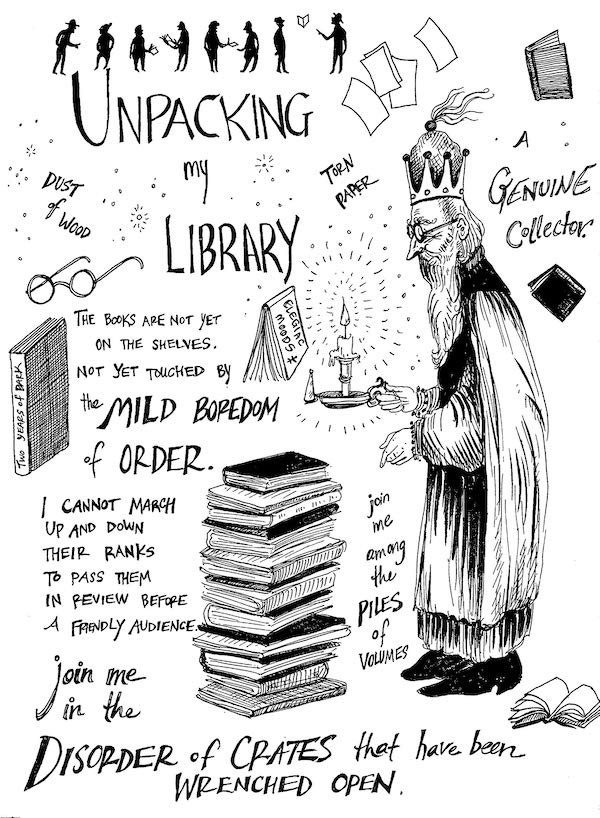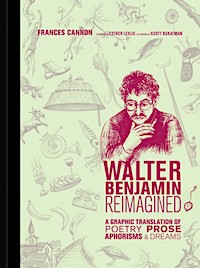Walter Benjamin is best known as a cultural critic, but he wrote all sorts of other forms and formats. Poems, parables, fables, short fiction, rhymes, riddles, and jokes, as well as transcriptions of dreams, all found their way into his extensive notebooks. According to Sam Dolbear, Esther Leslie, and Sebastian Truskolaski’s introduction to The Storyteller (Verso, 2016), he also left behind a fully outlined a crime novel.
Further on in The Storyteller, Benjamin affirms Marshall McLuhan’s assertion that once a form has obsolesced, it becomes important as art, a transition possibly orthogonal to his to-do regarding the aura. “To give a name to this watershed,” Bruno Latour and Adam Lowe (2011) write, “we will use the word trajectory. A work of art—no matter the material of which it is made—has a trajectory or, to use another expression popularized by anthropologists, a career (Appadurai, 1986; Tamen, 2001)” (p. 278). Once the novelty has worn off, once the work is placed in another context, then moved to yet others, repackaged and fetishized, its meaning changes. It becomes something else.

Intentionally transforming one work into something else, Frances Cannon illustrates many of Benjamin’s aphorisms, poems, thoughts, and dreams in Walter Benjamin Reimagined (MIT Press, 2019). “While intoxicated on mescaline in 1934,” writes Esther Leslie in her foreword,
Benjamin doodled an embryonic shape of twisty lines that is composed of words from lullabies, and puns between the words for sleep and sheep–sleep, little child, sleep, my kiddikin, go off to sleep, sheep, little sheep. It is word and image at once (p. x-xi).
 Lots of Benjamin’s writings lend themselves to lines, and like “Unpacking My Library” above (p. 56), Cannon’s drawings add a whimsy and a charm to some of his already playful words. It’s an excellent companion to other works by and about Benjamin.
Lots of Benjamin’s writings lend themselves to lines, and like “Unpacking My Library” above (p. 56), Cannon’s drawings add a whimsy and a charm to some of his already playful words. It’s an excellent companion to other works by and about Benjamin.
Like that other work, Benjamin’s only autobiographical writing published in his lifetime, One-Way Street and Other Writings (Belknap Press, 2016), originally released in 1972, is enjoying renewed attention. “Reminiscences of self are reminiscences of a place,” writes Susan Sontag in her introduction to the 1997 version, “and how he positions himself in it, navigates around it.” Like his contemporaries, the Situationists, his goal was to lose his way in a place with which he was very familiar, to get lost within the known. The book is the same. As Greil Marcus puts it in this new edition, “writing not in service of any argument but that of the pleasure of its own form” (p. xx).
That thought reminds me of one of my favorite digressions in Benjamin’s writings from yet another collection: Chapter 6 of Walter Benjamin’s Archive (2007) is called “Daintiest Quarters: Notebooks,” and starts off,
Notebooks are a part of the fundamental equipment of writers, artists, architects, scientists, in short, all intellectuals who devise things—thoughts, images—that they need to record and register: Notebooks are handy traveling companions, places for the safekeeping of drafts. They provide storage space for ideas and data. When necessary they can release sheets to be passed on or inserted into another context (p 151).
 Benjamin was nothing if not versatile. Radio Benjamin, edited by Lecia Rosenthal (Verso, 2014), compiles transcripts of Benjamin’s many radio broadcasts. In addition, the last section of the book features Benjamin’s various essays on the medium. Meanwhile, Benjamin and the Media by Jaeho Kang (Polity, 2014), considers his versatility—as a writer and theorist—and explores its implications. It’s the best introduction to his lasting relevance since Rolf J. Goebel’s edited collection, A Companion to the Works of Walter Benjamin (Camden House, 2009).
Benjamin was nothing if not versatile. Radio Benjamin, edited by Lecia Rosenthal (Verso, 2014), compiles transcripts of Benjamin’s many radio broadcasts. In addition, the last section of the book features Benjamin’s various essays on the medium. Meanwhile, Benjamin and the Media by Jaeho Kang (Polity, 2014), considers his versatility—as a writer and theorist—and explores its implications. It’s the best introduction to his lasting relevance since Rolf J. Goebel’s edited collection, A Companion to the Works of Walter Benjamin (Camden House, 2009).
References:
Benjamin, Walter. (2016). One-Way Street and Other Writings. Belknap Press.
Benjamin, Walter. (2016). The Storyteller: Tales Out of Loneliness. New York: Verso.
Benjamin, Walter. (2007). Walter Benjamin’s Archive. Translated by Esther Leslie. Edited by Ursula Marx, Gudrun Schwarz, Michael Schwarz, & Erdmut Wizisla. New York: Verso.
Cannon, Frances. (2019). Walter Benjamin Reimagined. Cambridge, MA: MIT Press.
Kang, Jaeho. (2014). Walter Benjamin and the Media: The Spectacle of Modernity. Cambridge: Polity.
Latour, Bruno & Lowe, Adam. (2011). The Migration of the Aura, or How to Explore the Original Through It’s Fac Similes. In Thomas Bartscherer (Ed.), Switching Codes: Thinking Through Digital Technology in the Humanities and the Arts (pp. 275-297). Chicago: University of Chicago Press.
Rosenthal, Lecia (Ed.) (2014). Radio Benjamin. New York: Verso.
I marshal the middle between Mathers and McLuhan.
Editor of Boogie Down Predictions (Strange Attractor, 2022), author of Escape Philosophy (punctum, 2022) and Dead Precedents (Repeater, 2019).
